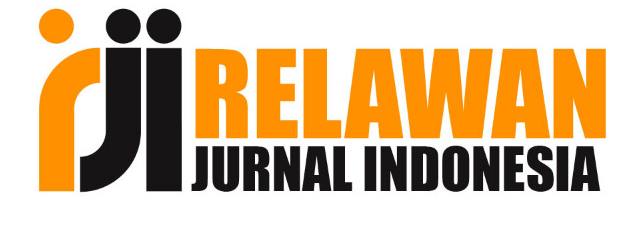USING PICTURE-SERIES BASED INSTRUCTION TO IMPROVE SPEAKING AND WRITING ACHIEVEMENTS OF THE EFL UNDERGRADUATE STUDENTS
DOI:
https://doi.org/10.36982/jge.v5i1.206Abstrak
Speaking and writing skills are very prominent for the students to actively interact and to get involved in spoken and written communication. However, these are regarded as difficult skills to master by the students. The researchersthen would like to carry out the research in terms of using picture-series to cope with the students’ speaking and writing problem. The objective of this research were: (1) to find out whether picture-series significantly improve the speaking and writing achievement of the EFL undergraduate students, (2) to find out the significant difference in speaking and writing achievement between the students who were taught by using picture series and those who were not. A quasi-experimental study of non-equivalent pretest- posttest control group design or comparison group design was used in this research. The population of this research was all undergraduate students of Civil Engineering study program of Indo Global Mandiri University in the academic year of 2014/2015. Forty students were taken as sample and selected by using purposive sampling technique in which each group consisted of 20 students, respectively. The findings showed that (1) there was a significant improvement on the speaking and writing achievement of the experimental group where the tobtained of the speaking and writing achievement were 12.197 (p<0.000) and 18.710 (p<0.000), (2) there was also a significant difference between the speaking writing and achievement of the experimental and control group where tobtained were 2.916 (p<0.000) and 3.949 (p<0.000). Therefore, it could be concluded that the picture series-based instruction statistically and significantly improves the speaking and writing achievement of the EFL undergraduate students.
 Key words: picture series, speaking achievement, writing achievement
Referensi
Adhikari, B. R. (2010). Teaching speaking in the Nepalese context: Problems and ways of overcoming them. Journal of NELTA, 15(1), 1-9.
Bardos, J. (2000). AzidegennyelvektanÃtásánakelméletialapjaiésgyakorlata (The Theoretical Foundations and Practice of Teaching Foreign Languages). Budapest: NemzetiTankönyvkiadó.
Brown, H. D. (2001). Teaching by Principles: an Interactive Approach to Language Pedagogy. (2nd edition). New York: Addison Westley Lonman, Inc.
Chomsky, N. (1965). Aspects of the theory of syntax. Cambridge, MA: Massachusetts Institute of Technology Press. Retrieved from http://faculty.georgetown.Edu/irvinem/theory/Chomsky-Aspects-excerpt. pdf
Gert, R., & Hans, S. (2008). Handbook of communication competence. Berlin, Germany:University of Bielefeld.
Harmer, J. (2004). How to teach writing. New York: Pearson Education Ltd.
Hughes, A. (2004). Testing for languageteachers(2nd edition.). Cambridge: Cambridge University Press.
Latuheru, J. D. (1988). Media pembelajarandalam proses belajarmengajarmasakini. Retrieved from http://endonesa.wordpress.com/ ajaranpembelajaran/media-pembelajaran.
Lutfiyah, L. (2009). Teaching descriptive texts using still pictures. In B. Y.Cahyono (Eds.), techniques in teaching EFL writing: Practical guidesfor English teachers of SMP/MTs in Indonesia. Malang: State Universityof Malang Press.
Marcellino, M. (2005). Competency-based language instruction in speaking classes: Its theory and implementation in Indonesian contexts. Indonesian Journal of EnglishLanguageTeaching, 1(1), 33-44.
McMillan, J. H., & Schumacher, S. (2010). Research in education: Evidence-based inquiry (7th edition).New York, NY: Pearson.
Mid-Continent Comprehensive Center. (2012). Student oral language observation matrix (SOLOM). Retrieved from http://www.mc3edsupport.org/community/knowledgebases /student-oral language-observation-matrix-solom-1061.html.
Mumford, S. (2008). Picture This! Modern English Teacher, 17(2), 40-42.
Nirmala, Y. (2008). Teaching writing using picture stories as tools at the high school level: The movement from other regulation to self-regulation. The English and Foreign Languages University.
Nunan, D. (2003). Practical English language teaching. New York, NY: McGraw-Hill Book Company.
Raimes, A. (1983). Techniques in teaching writing. Cambridge: Oxford University Press.
Richard, J. C. (1990). Conversationally speaking approaches to the teaching of conversation: The language of teaching matrix. New York, NY: Cambridge University Press.
Sa’diyah, H. (2010). Improving students’ ability in writing descriptive texts through a picture series aided learning strategy. The English Teacher, 164-182.
Smaldino, E. Sharon.et al. (2005). Instructional Technology and Media for Learning. Boston: Pearson.
Times Higher Education (2014). The world university rankings. Retrieved from https://www.timeshighereducation.com/world-university-rangkings/2014/reputation-rangking.
Uematsu, H. (2012). The use of pictures and illustrations in teaching English. 21st Century Education Forum, 45-50.
Wright, Andrew. (1989). Pictures for language Learning. Cambridge. CUP.
Unduhan
Diterbitkan
Cara Mengutip
Terbitan
Bagian
Lisensi
Global Expert: Jurnal Bahasa dan Sastra is published by Universitas Indo Global Mandiri and licensed under a Creative Commons Attribution-ShareAlike 4.0 International License.










